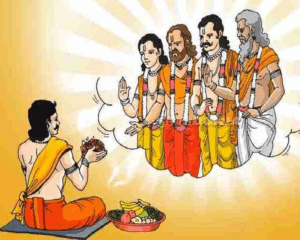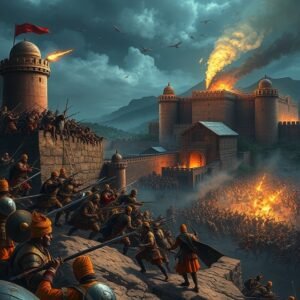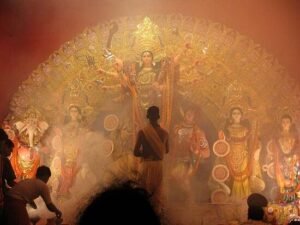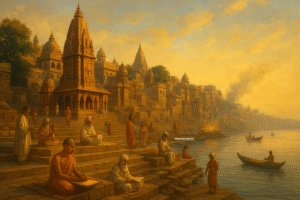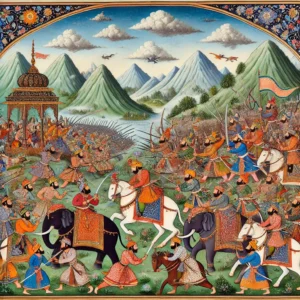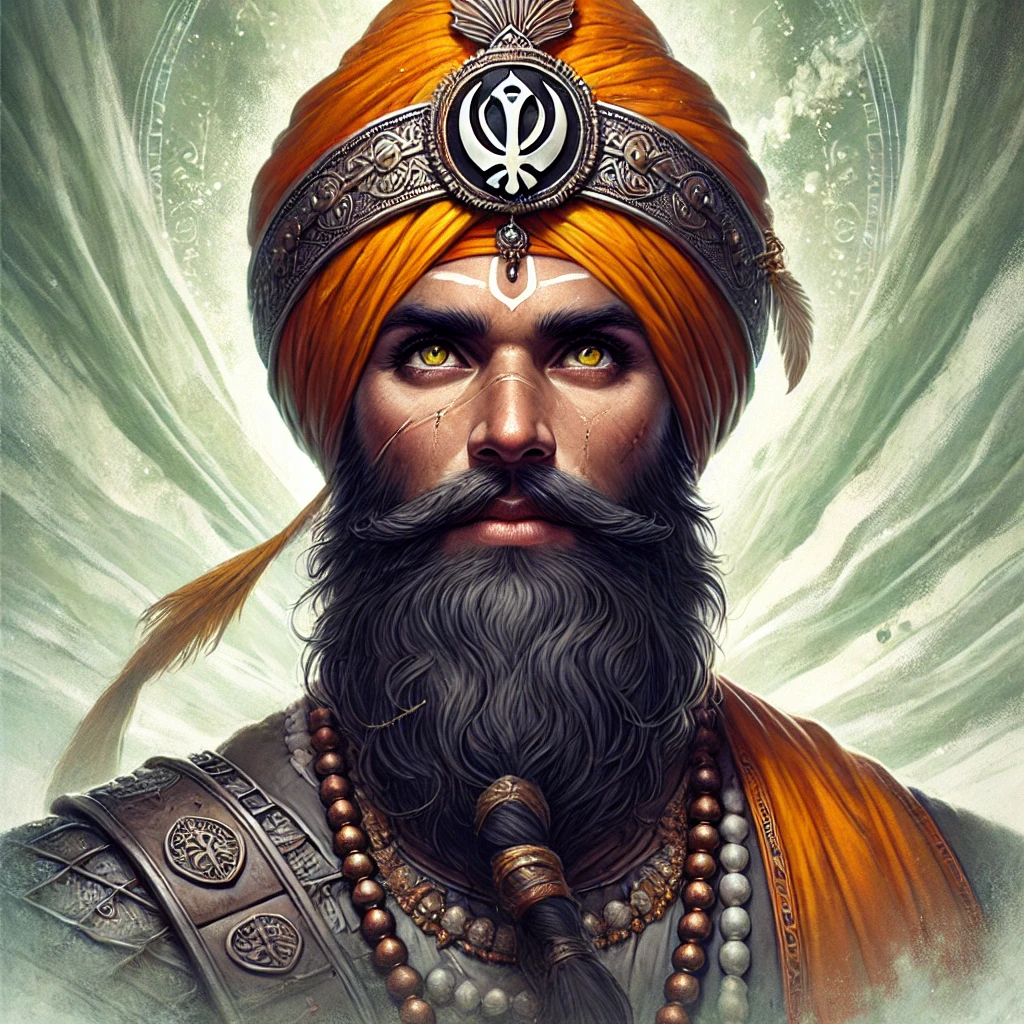
Guru Gobind Singh, the tenth and last human Guru of Sikhism, stands as a towering figure in Indian history. His life (1666–1708) was a blend of spirituality, bravery, and reformist vision that shaped the Sikh faith and its followers into a formidable spiritual and martial community. Known for his literary genius, courage, and organizational skills, Guru Gobind Singh not only defended his people against tyranny but also provided a blueprint for selfless service, justice, and equality.
Early Life and Background
Guru Gobind Singh was born as Gobind Rai on December 22, 1666, in Patna, Bihar, to Guru Tegh Bahadur, the ninth Sikh Guru, and Mata Gujri. His childhood was steeped in spirituality and a sense of justice, influenced heavily by his father, who would later sacrifice his life to protect the religious freedom of Hindus against Mughal oppression.
In 1675, following the martyrdom of his father, Guru Gobind Singh ascended to the position of Guru at the tender age of nine. Despite his young age, he exhibited remarkable maturity, embodying his father’s values of justice, compassion, and fearlessness.
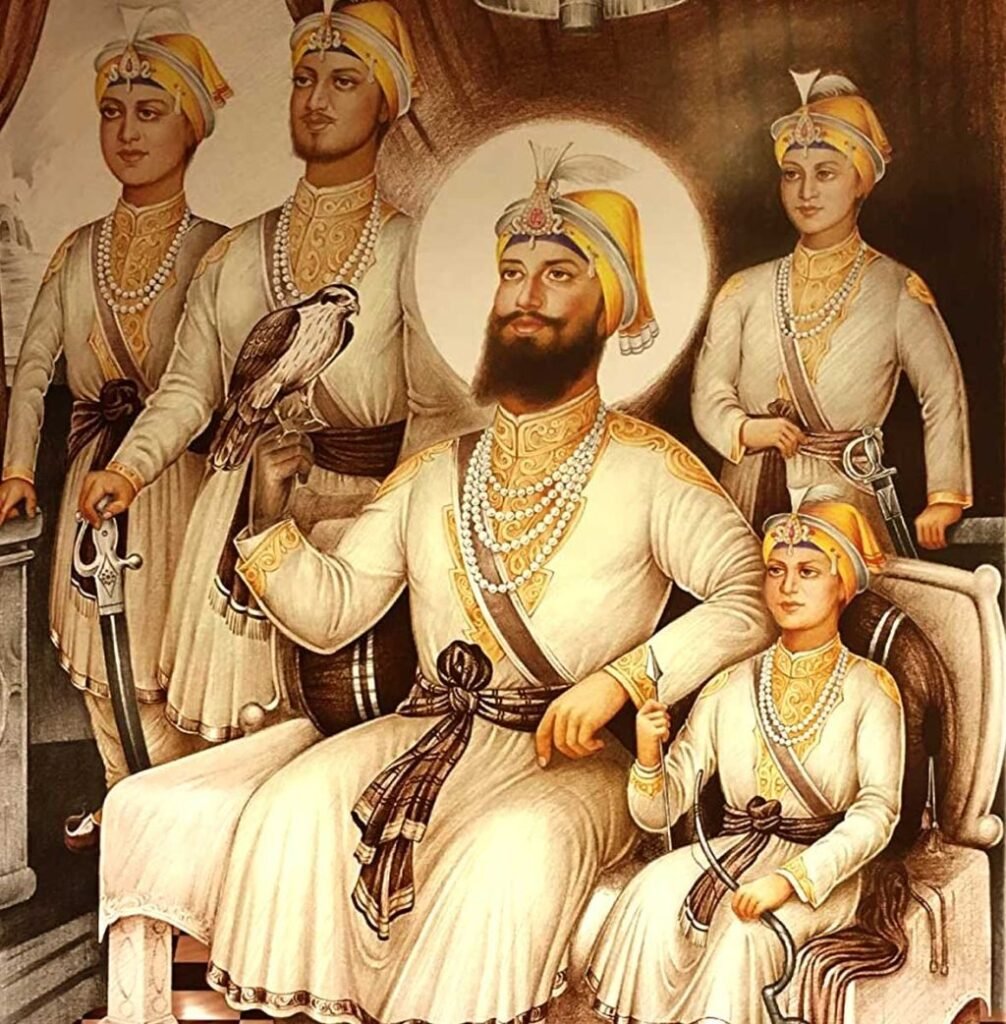
Establishment of the Khalsa
One of One of Guru Gobind Singh’s most enduring contributions was the creation of the Khalsa Panth on Baisakhi Day, March 30, 1699. This pivotal moment redefined Sikhism and transformed it into a martial and spiritual force committed to defending justice and equality.
- Initiation of the Khalsa: On this historic day, Guru Gobind Singh called upon his followers at Anandpur Sahib and tested their devotion by asking for volunteers willing to sacrifice their lives. Five men courageously stepped forward, symbolizing complete faith and fearlessness. These five, later known as the Panj Pyare (Five Beloved Ones), became the nucleus of the Khalsa.
- Principles of the Khalsa: Guru Gobind Singh baptized the Panj Pyare using Amrit (sacred water) and established the core principles of the Khalsa:
- Equality: Abolishing caste-based discrimination.
- Discipline: Adherence to a code of conduct based on Sikh ethics and values.
- Courage: A readiness to defend the oppressed and fight for righteousness.
- The Five Ks: The Guru introduced five articles of faith—Kesh (uncut hair), Kangha (a wooden comb), Kara (a steel bracelet), Kirpan (a sword), and Kachera (cotton undergarments)—as symbols of the Khalsa’s identity and commitment.
The Khalsa Panth united Sikhs into a brotherhood of equals, instilling in them a sense of pride, discipline, and moral responsibility.
Literary Brilliance
Guru Gobind Singh was a prolific writer, philosopher, and poet. His literary genius shone through his works in multiple languages, including Braj, Punjabi, Persian, and Sanskrit. His compositions combined spiritual devotion, philosophical insight, and martial vigor, leaving a profound impact on Sikh philosophy and culture.
Major Literary Contributions:
- Dasam Granth:
This monumental collection includes hymns, heroic ballads, and philosophical reflections. Notable sections include:- Chandi di Var: Narratives of the goddess Chandi, symbolizing the victory of good over evil.
- Akal Ustat: Praises of the eternal and formless God.
- Jaap Sahib:
A devotional hymn glorifying the omnipresence and omnipotence of God. It showcases Guru Gobind Singh’s literary mastery and spiritual vision. - Zafarnama:
A Persian epistle addressed to Mughal Emperor Aurangzeb, Zafarnama is both a critique of the emperor’s tyranny and a reaffirmation of the Guru’s unwavering faith in divine justice.
Guru Gobind Singh’s writings emphasized selflessness, courage, and devotion, inspiring his followers to live with purpose and dignity. His poetry’s vivid imagery and deep philosophical undertones remain timeless.
Major Battles and Military Leadership
Guru Gobind Singh was not only a spiritual leader but also a masterful military strategist. His leadership was marked by numerous battles fought to protect religious freedom and defend the oppressed.
- Battle of Anandpur Sahib (1704):
This prolonged siege saw Guru Gobind Singh and his followers heroically defend Anandpur Sahib against the combined forces of the Mughals and Hill Rajputs. Despite immense hardships, the Guru’s leadership inflicted heavy losses on the enemy, although the Sikhs were eventually forced to evacuate under deceitful promises of safe passage. - Battle of Chamkaur (1704):
This battle epitomized Sikh valor. With just 40 companions, Guru Gobind Singh resisted an enormous Mughal force. His two elder sons, Sahibzada Ajit Singh and Sahibzada Jujhar Singh, attained martyrdom in this battle, displaying unparalleled bravery. - Battle of Muktsar (1705):
Fought near Khidrana, this battle saw 40 Sikhs, who had earlier deserted the Guru, return to defend him under the leadership of Mai Bhago. Their sacrifice earned them the title “Chali Mukte” (Forty Liberated Ones).
These battles were not mere military engagements but symbols of the Sikh ethos: resilience, sacrifice, and the pursuit of justice.
Legacy
One of Guru Gobind Singh’s most transformative acts was declaring the Guru Granth Sahib as the eternal Guru of the Sikhs. In 1708, shortly before his passing, he decreed that the Sikh community would no longer follow human Gurus but instead regard the Guru Granth Sahib, the holy scripture, as their spiritual guide.
This decision solidified Sikhism as a religion centered on equality, service, and devotion, free from hierarchical structures.
Guru Gobind Singh’s teachings and legacy continue to inspire millions. He emphasized the importance of inner strength, justice, and standing against oppression, values that resonate beyond religious boundaries.
Conclusion
Guru Gobind Singh was more than a religious leader; he was a reformer, warrior, and poet who redefined the Sikh faith and instilled a spirit of fearlessness among his followers. His vision of a just society and his unwavering commitment to fighting oppression remain relevant today. Guru Gobind Singh’s life is a shining testament to the power of courage, selflessness, and faith in shaping a better world.

